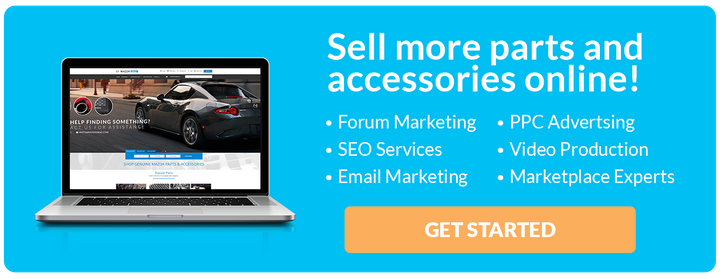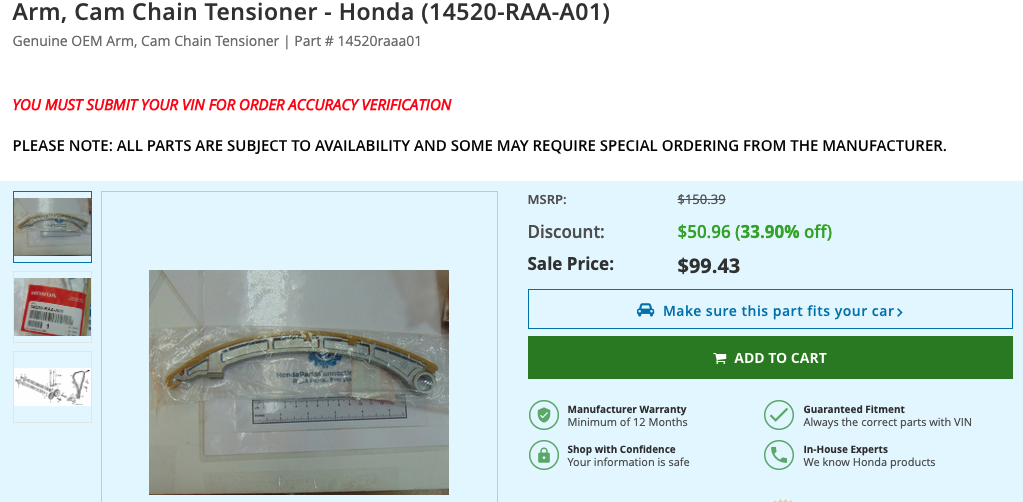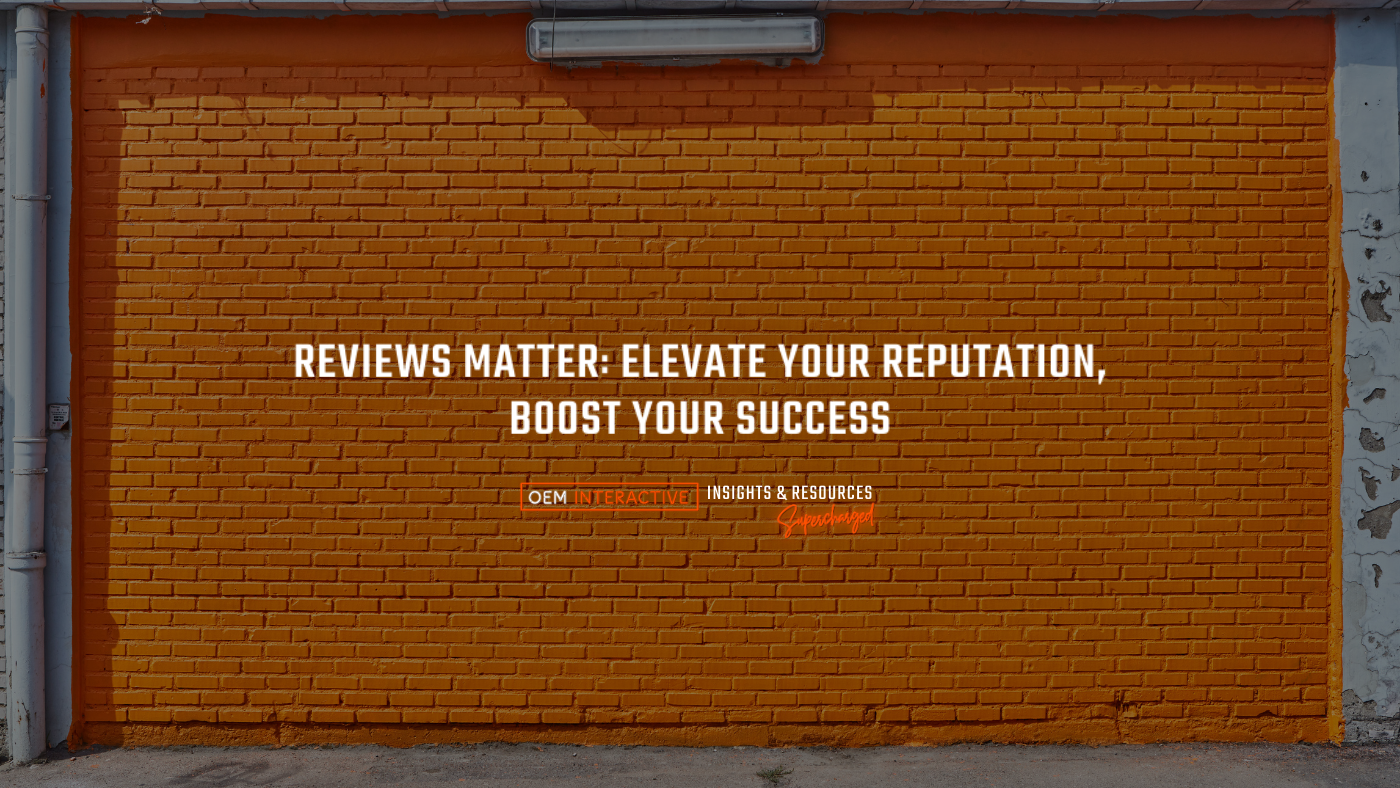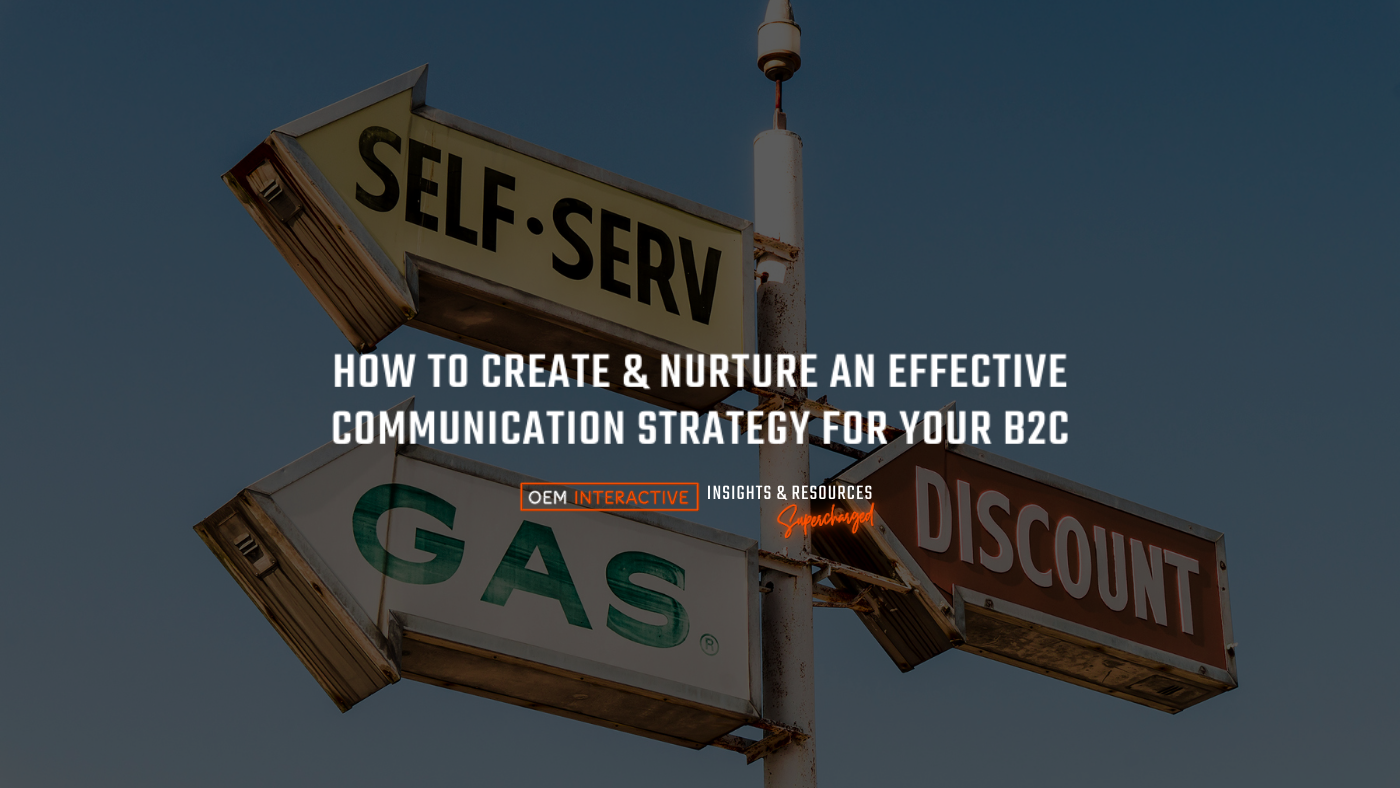As an ecommerce auto parts vendor, minimizing prices is the simplest thing you can do to increase your sales. With that being said, modern consumers expect more than just low prices when they’re shopping online. In fact, over 90% of consumers agree that they are more likely to make another purchase after a positive customer service experience.
Even if a positive interaction doesn’t lead to a sale today, it can still help you move a lead through the sales funnel and generate more orders over time.
With hundreds of auto dealers across the country undercutting each other on the exact same parts online, racing to the bottom isn’t always a sustainable strategy. Improving your customer experience takes time, but it can give you the freedom to charge a little more without losing as many sales.
Personalization doesn’t have to be complicated—a few simple changes will go a long way toward humanizing your site. Let’s take a look at five of the most effective ways to personalize the parts buying experience and make more sales on your online store.
Leverage Product and Site Reviews
When we visit a new ecommerce store, the first thing we want to know is whether we trust them to deliver. Most consumers don’t window shop at online auto parts stores—they look for parts when they need them right now. Their first impression will determine whether they stay on your site or look for another vendor.
Unlike customers who walk into your storefront, most online buyers don’t know who you are before they visit your website. Converting those cold leads into loyal customers starts with building a positive relationship and earning their trust.
 With that in mind, this material should be displayed wherever it can be included naturally. Short testimonials on your part and accessory product pages can generate 34% more sales, and they may be even more effective if they respond to common questions, concerns, or pain points that visitors might be thinking about when looking at a particular product.
With that in mind, this material should be displayed wherever it can be included naturally. Short testimonials on your part and accessory product pages can generate 34% more sales, and they may be even more effective if they respond to common questions, concerns, or pain points that visitors might be thinking about when looking at a particular product.
Build Custom Banners
Custom banners might sound like an unnecessary expense for your department, but they could be instrumental in increasing your online parts ROI and maximizing your absorption rate. Building custom banners is one of the most straightforward yet effective ways to create a strong first impression and immediately differentiate your site from the average online auto parts store.
The generic banner below doesn’t communicate any key value propositions that will differentiate them over the competition. If you see this at the top of an ecommerce site, you’ll probably move on to the products without paying much attention to the banner.

The custom banner below is far more effective. It outlines key value propositions for the customer in short, easy to digest bullet points. These are things the consumer cares about that will affect their buying decision. We need to think of web banners as a billboard—every word is important. Throwing up a homepage banner just to fill up space, isn’t going to help you drive more parts sales. Notice that the text is written in direct response to the key question that every visitor is thinking: why should I buy from this seller instead of another? As a commodity vendor, you want to answer that question as quickly as possible when a lead reaches your site.

Personalize Your Parts Team
Your website will never match the experience of buying parts in-store, but humanizing your site will make it more approachable for your visitors. Customers shouldn’t feel like they’re missing out by buying from your online store instead of visiting your physical storefront.
Staff photos, videos, and bios are a great way to introduce your department to new leads. You wouldn’t let a customer leave the showroom without introducing yourself, so why do the same thing to your digital audience? Even if you can’t meet visitors in person, you should still demonstrate that you’re interested in answering their questions and earning their trust. A great area to add these photos and videos are on your website’s ‘About us’ page.
Add Product Photos and Videos
Visiting a product page is a clear indication that a lead is ready to purchase, so you want to convert those visitors into customers as frequently as possible. Custom product images and photos offer a more personal touch than stock photos that visitors can find on any other website. Typically, most dealers will utilize the same parts and accessories catalog which often utilizes the same schematic images for everyone.
Along with personalization, taking custom images and videos of your products gives you the opportunity to offer more details about each item. Make sure to include all relevant specs and product details along with enough photos and videos to give customers a complete visualization of the item they’re looking at.
While your results may vary, we’ve found that clients who invest in real photos of their parts and accessories generate twice as many conversions while reducing their customer acquisition costs. The product page below has a clear, simple design, but it only offers a standard schematic that customers could find on any other site.
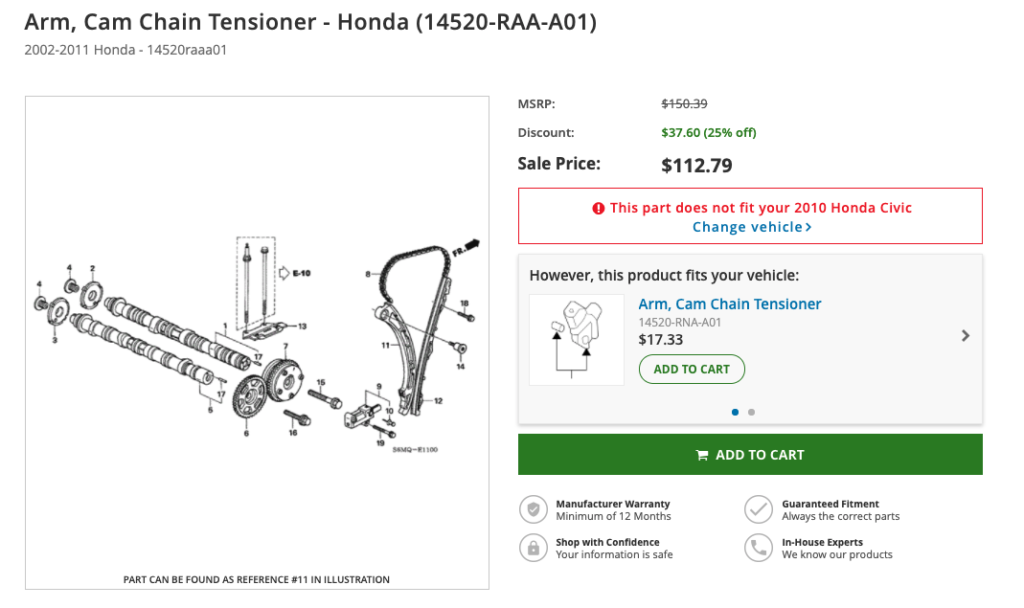 On the other hand, the next example includes a photo of the part itself as well as the bar code. The same standard schematic is still on the page, but visitors can also see custom photos that were actually taken by the parts team they’re buying from.
On the other hand, the next example includes a photo of the part itself as well as the bar code. The same standard schematic is still on the page, but visitors can also see custom photos that were actually taken by the parts team they’re buying from.
Engage Through Live Chat
70% of customers either already use or want to use chatbots to engage with brands, making them a necessity for online auto parts stores. As a commodity vendor, you can’t afford to fall behind the competition when it comes to interacting with buyers.
Putting someone on hold might not have been a big deal in 2001, but it’s not going to fly in 2021. We don’t want to be put on hold or put in a queue anymore—we want to get an instant response so we can find what we’re looking for and move on with our day.
83% of all consumers expect to engage with someone immediately when they contact a company, and chatbots can reliably answer the most common questions your department receives. Chatbots can actually save you money by making your customer service more efficient and taking pressure off of your support team.
More and more auto parts vendors are moving into the ecommerce space, but only a small percentage of these sellers are thinking strategically. When your competitors can sell the same products that you have, at similar prices, the customer experience is your best opportunity to add value and differentiate yourself from other vendors.
Humanizing your site might not lead to more sales tomorrow or even next week, but it will change your department’s trajectory and help you make the most of each interaction. A personal ecommerce experience is no longer a luxury—it’s the expectation of online shoppers.

